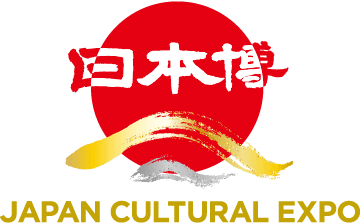The “MUNAKATA ECO FESTIVAL,”
a JAPAN CULTURAL EXPO “Island of the Gods” International Cultural Art Project, is...
“The Sacred Island of Okinoshima and Associated Sites in the Munakata Region,” a World Heritage Site and vestiges of the culture born forth from vibrant exchange between ancient Japan and East Asia, is worshipped as an “Island of the Gods” where the diversity of nature is revered. The traditions passed down there over time have contributed greatly to Japan’s cultural formation and its forward development. Founded on the spirit and thinking that has been inherited alongside those traditions, the JAPAN CULTURAL EXPO “Island of the Gods” International Cultural Art Project serves to communicate “the spirit and beauty of Japan” to the rest of the world through a variety of cultural arts programs.
Over the ages, Japanese people have gone about their daily lives giving thanks and prayers to Mother Nature while remaining in awe of her providence and approaching her with humility. In the process, a way of thinking called “tokowaka,” or “everlasting youth,” was nurtured in Japan since ancient times. In the natural world, an endless cycle in which all matter is constantly and continuously circulated and reborn is maintained. “Tokowaka” is a symbol of that cycle of time, and is an expression of the question of how the earth and mankind should coexist while preserving the life of one another.
Held in cooperation with the “Munakata Global Environmental Symposium” that practices the ideas of tokowaka and communicates them to the rest of the world from Munakata, host of a World Heritage Site, the “MUNAKATA ECO FESTIVAL 2020” is a forum that poses the question of what form our planet and mankind should ideally take. Simultaneously, the festival serves as a bridge between environmental and cultural arts activities whose purpose is to establish a “sphere of cyclical coexistence” with cultural arts as its center through an outlook on nature, sensibilities, and ways of thinking and expression unique to Japan.
Organized By
Agency of Cultural Affairs, Japan Arts Council
and Munakata Global Environmental Symposium Executive Committee
Event Period
Thursday, October 1–Sunday, October 25, 2020
*The event schedule will vary depending on the program. Please check the page for each program.。
About the Munakata Global Environmental Symposium

Predominantly addressing issues such as coastal contamination spreading along seaboard areas, trash (microplastics) drifting ashore and other issues created by the rise in temperature in the Genkai Sea, the Munakata Global Environmental Symposium was established in 2014 as a sustainable regional initiative that collaborates with domestic and overseas academics, local governments, corporations, NPOSs, media outlets and other entities to engage in marine regeneration projects alongside local residents and junior high and high school students under the concept of a “Grove of the Sea” as well as relays recommendations and information regarding dramatic changes in the sea in recent years to domestic and overseas parties.
Primary Activities:
- Raising awareness: Holding public lectures and other events at annual Munakata Global Environmental Symposium
- Regenerating the sea: Building artificial fishing reefs and cleaning up floatage on coasts
- Developing next generation of human resources: Administering Munakata International Education Program (around 8 sessions per year) for local junior high and high school students
- Other activities: Publishing pamphlets and creating videos for transmission on website
- https://www.munakata-eco.jp (Japanese)
- https://en.munakata-eco.jp (English)
About the JAPAN CULTURAL EXPO

For over 10,000 years since the Jomon period of Japanese history to the present, “the beauty of Japan” has been an expression of the “spirit” of valuing the diversity of nature, believing that life resides in all living things, and revering those things. Treasuring the aspects of landscape and climate, Japan has materialized the “spirit” of mankind resonating and empathizing with nature in various areas, staring with Jomon earthenware and continuing with sculptures of Buddha, forms of pictorial expression like ukiyo-e woodblock prints and byobu folding screens, handicrafts such as urushi lacquerware, dyed fabrics like kimonos, traditional performing arts such as Noh and kabuki, cultural arts, and present-day manga and anime, as well as in aspects of daily living such as food, clothing and shelter and in lifestyles. Simultaneously, the Japanese people place an emphasis on the “aesthetics” present in those many areas. The hope behind the JAPAN CULTURAL EXPO is that it will promote exchange between people and stir emotions in them, and translate into respect for the diversity inherent in our world, the sharing of universality, and prayers for peace.
